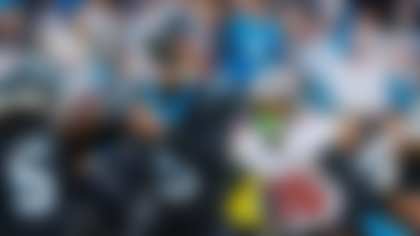IRVING, Texas -- NFL owners approved a restructured ownership plan for the Pittsburgh Steelers on Wednesday to keep the team under the control of chairman Dan Rooney and his son.
Under the plan approved by a 31-0 vote during a meeting of the owners, Rooney and his son, team president Art II, will own 30 percent of the team, meeting a league requirement on the equity on controlling ownership.
"I felt that our father started this team in 1933, and it's done well, it's been a big part of Pittsburgh," Dan Rooney said. "And that's the way it should stay, under our direction."
Rooney and his four brothers each acquired equal 16 percent shares in the team when Steelers founder Art Rooney Sr., their father, died in 1988. The Jack McGinley family owns the other 20 percent of the franchise.
The restructuring was mandated by the NFL to bring the Steelers into compliance of the 30 percent benchmark. Another league rule bars team owners from being involved in gambling, so two of the Rooney brothers who operate race tracks that feature slot-machine and casino gambling, Pat and Tim, are selling their 16 percent shares as part of the plan.
"It's a very complex issue dealing with significant financial issues and complexities in estate planning," NFL commissioner Roger Goodell said. "I'm pleased for all of the Rooney family that it's resolved in a positive way for them."
Two other brothers, Art Jr. and John, are selling a portion of their shares, and the McKinley family also is expected to sell some of its stake in the team.
Goodell said discussions about the restructuring of the Steelers' ownership to get into league compliance had been ongoing for about three years.
"The initiative, frankly, was that they had changed their business operations, and the gambling operations had gone more into gambling," Goodell said. "It was of greater concern to us than the original horse racing and dog racing. That initiated some discussions, and it really just had to get resolved for the club."
Dan Rooney and his son will not buy all those shares being sold and don't need them all to own 30 percent interest in the team. What wasn't immediately clear was how the sale would break down between Dan Rooney, his son and other investors.
The NFL approved three new partners for the Steelers during the meeting: James Haslman III of Knoxville, Tenn.; Thomas Tull of Los Angeles; and the Paul family, which is based in Pittsburgh and Los Angeles.
The agreement among the Rooney family calls for the deal to be closed by March 31.
"We have a few more investors in the pipeline, but we're happy that the transaction was approved by the owners. Now we have to go into finalizing some of the details," Art Rooney II said. "This was a big step, and I'm glad we got this far to get to a closing and finalizing everything."
While Dan Rooney and his son are expected to take on about $250 million in debt, Art Rooney II said there are no plans to make dramatic changes in the way the team is operated, despite the difficult economic climate.
"We wouldn't have done it if we didn't think that we were going to be able to handle it," Art Rooney II said. "We plan to operate along the same operating guidelines that we have historically."
Stanley Druckenmiller, chairman of a Pittsburgh-based investment firm, earlier this year made an offer to buy a majority stake of the team, but the billionaire withdrew his offer in September.
"I have no ill will for Stanley Druckenmiller. He's a great Steelers fan, and I hope he remains one," Dan Rooney said. "It was a lot of work, and everybody put forth the effort. ... It wasn't a slam dunk strictly for the Rooneys. This was something the league felt was good for them."
Dan Rooney said his brothers saw the benefits of the restructuring plan that's now in place and that the relationships between them are good.
"We all still talk to each other and only fight as we always did," Dan Rooney said. "Everything is fine."
Copyright 2008 by The Associated Press



